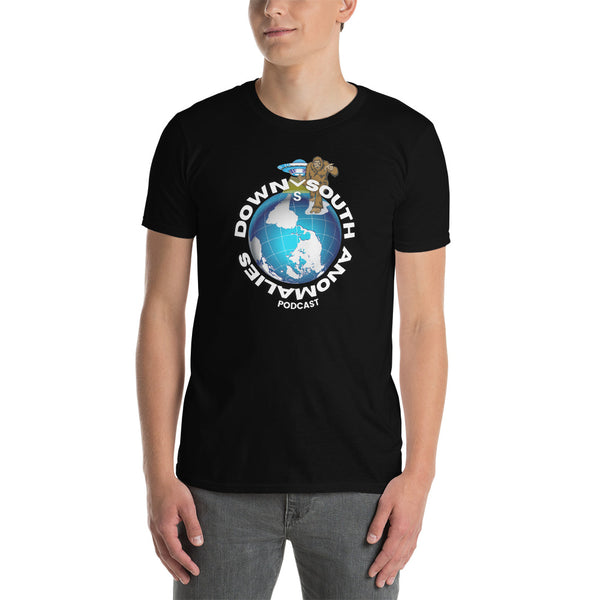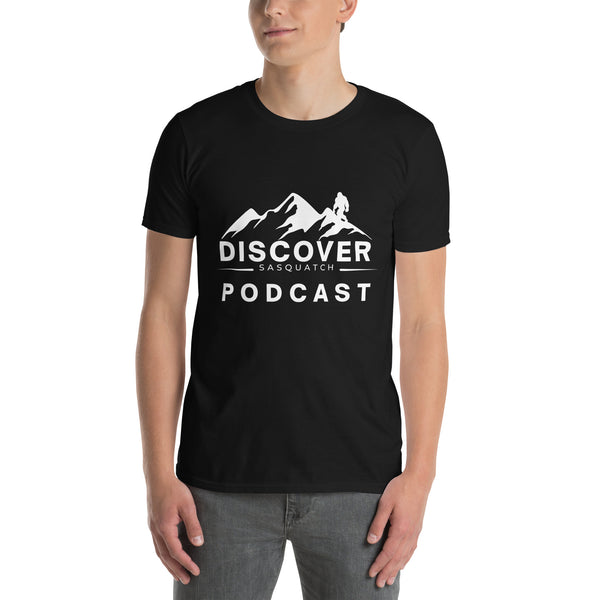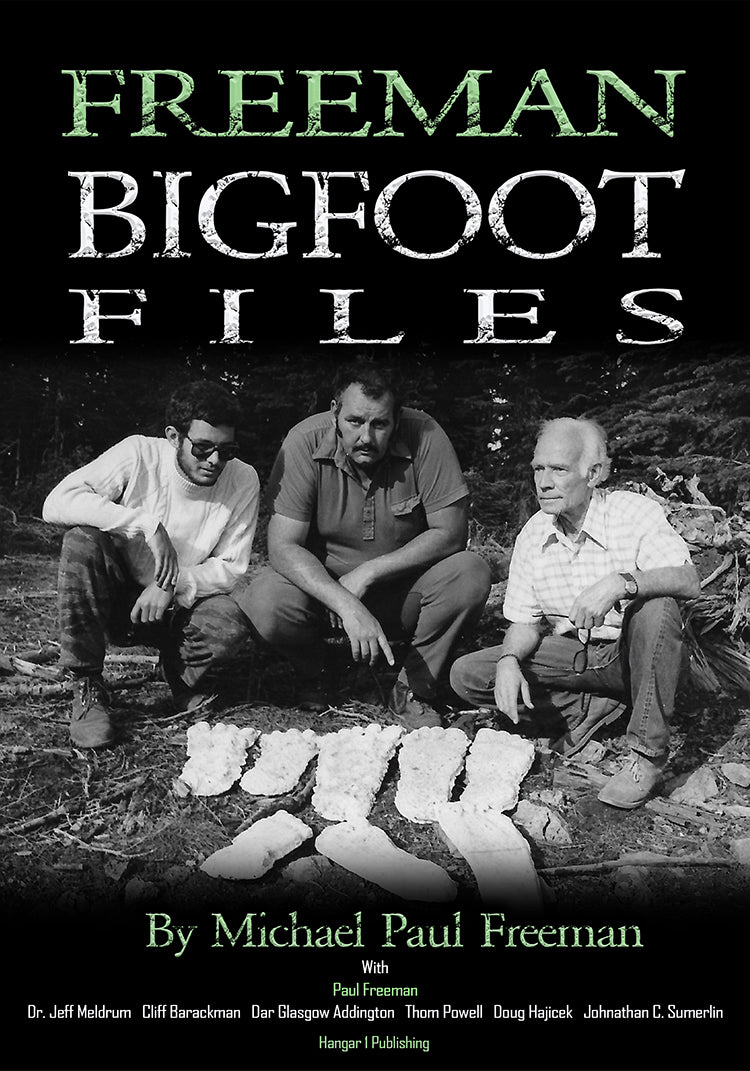Decoding the Different Faces of Project Pegasus

By Elaine Westfield, Ufologist
Beyond the Mythical Steed
In Greek mythology, Pegasus was a magnificent winged horse born from the blood of Medusa. A symbol of divine inspiration, Pegasus carried thunderbolts for Zeus and helped heroes like Bellerophon achieve impossible feats. Today, the name "Project Pegasus" has taken flight in our modern imagination, appearing across strikingly different domains – from advanced surveillance technology to alleged time travel experiments, from crime prevention to renewable energy. Like its mythological namesake, these projects soar beyond ordinary boundaries, whether in reality or in the minds of their creators.
What's fascinating about "Project Pegasus" is that it isn't one single initiative. Instead, the name has been adopted by various entities with vastly different goals and levels of credibility. Some are well-documented international investigations with real-world impact. Others exist primarily in the claims of individuals, their reality contested but their narratives no less intricate.
In this article, we'll examine each iteration of "Project Pegasus," uncovering their origins, purposes, and impacts. We'll navigate from the realm of cutting-edge surveillance technology that's been used to target journalists worldwide, to a UK initiative battling organized retail crime, to a community-based effort to secure small airfields, and even to the extraordinary claims of time travel and Mars exploration. Along the way, we'll also discover why this name – with its connotations of power, freedom, and transcendence – continues to capture our imagination across such diverse contexts.
Project Pegasus, the Spyware Scandal: Unmasking a Digital Menace
The most prominent "Project Pegasus" in recent years emerged in July 2021, when an international consortium of journalists published a groundbreaking investigation into a powerful spyware called Pegasus, developed by the Israeli company NSO Group. This wasn't just another tech story – it represented one of the most significant threats to press freedom, human rights, and privacy in the digital age.
The investigation began with a leaked list of over 50,000 phone numbers. These weren't random numbers but belonged to individuals who had potentially been targeted for surveillance by NSO Group's clients. What made this story explosive wasn't just the scale but who was on the list: journalists from CNN, The New York Times, and Reuters; human rights activists; politicians including presidents and prime ministers; lawyers; business executives; and even religious figures like those close to the Dalai Lama.
The Pegasus Project, as the investigation was named, brought together more than 80 journalists from 17 media organizations across 10 countries. Led by the Paris-based journalism nonprofit Forbidden Stories and supported by Amnesty International's Security Lab, these journalists risked becoming targets themselves as they worked to expose this global surveillance scandal.
What makes Pegasus spyware particularly frightening is its technical sophistication. Unlike early hacking tools that required users to click on malicious links, Pegasus can infect phones through "zero-click" attacks – meaning your device can be compromised without you doing anything at all. A text message you never even open, a WhatsApp call you don't answer – these are enough for Pegasus to silently infiltrate your phone.
Once installed, Pegasus turns your most personal device into a perfect spy. It can access your messages, emails, photos, and location data. It can activate your microphone to listen to your conversations or turn on your camera without your knowledge. Your phone – that intimate extension of yourself that goes everywhere with you – becomes a betrayer, feeding your private life to unknown observers.
The forensic evidence uncovered by Amnesty International's Security Lab was damning. They examined 67 smartphones belonging to people on the leaked list and found evidence of successful Pegasus attacks or attempted infection on 37 of them – a staggeringly high confirmation rate of 55% for what was supposed to be an undetectable tool.
Behind the technical details lie real human stories. Mexican journalist Cecilio Pineda Birto was on the list; weeks later, he was murdered. The two women closest to Saudi journalist Jamal Khashoggi – his fiancée Hatice Cengiz and his wife Hanan Elatr – were targeted before and after his brutal assassination. Hungarian investigative journalist Szabolcs Panyi discovered his phone had been infected during a seven-month period in 2019 while he was investigating government corruption.
The psychological impact on targets is profound. Azerbaijani journalist Khadija Ismayilova described the feeling: "We've been recommending each other this tool or that tool, how to keep [our phones] more and more secure from the eyes of the government. And yesterday I realized that there is no way. Unless you lock yourself in an iron tent, there is no way that they will not interfere into your communications."
NSO Group has consistently denied wrongdoing, claiming Pegasus is only sold to governments to track terrorists and criminals. They insist they vet clients based on human rights records and have procedures to prevent misuse. Yet the evidence suggests otherwise – the technology has repeatedly been found on the devices of people who pose no security threat but who do challenge powerful interests.
The revelations triggered significant responses. The United States placed NSO Group on its "Entity List," restricting its access to American technology. Apple sued the company for targeting its users and has worked to patch vulnerabilities in iOS. The European Parliament established a committee to investigate the use of Pegasus within Europe. There have been calls for a global moratorium on the sale of spyware until human rights safeguards are in place.
Yet many questions remain unanswered. Who authorized these surveillance operations? What happened to the data collected? And perhaps most importantly – how can we protect ourselves in a world where our most personal devices can be weaponized against us?
Project Pegasus in the Fight Against Crime: A Collaborative Shield
While one Project Pegasus exposes surveillance overreach, another aims to prevent crime through legitimate collaboration. In October 2023, the UK launched a different initiative called Project Pegasus – a partnership between retailers and police forces to combat organized retail crime.
This Project Pegasus addresses a tangible problem affecting businesses and communities across the UK. As retailers have increasingly become targets of organized criminal gangs, traditional approaches have proven insufficient. The initiative represents a shift toward intelligence-sharing and coordination that crosses the usual boundaries between private business and law enforcement.
At its core, this Project Pegasus is about information. Retailers possess valuable data about theft patterns, suspicious behaviors, and known offenders, while police have broader intelligence on criminal networks. By bringing these information streams together, the project aims to identify connections that might otherwise remain hidden.
The initiative has attracted impressive backing. Thirteen major UK retailers – including household names like Aldi, Boots, Co-op, John Lewis, Lidl, Marks & Spencer, Morrisons, Next, Primark, Sainsbury's, and Tesco – have committed funding for a specialized police team. This team operates within OPAL, a national unit overseeing serious organized acquisitive crime, led by North Wales Chief Constable Amanda Blakeman.
Sussex Police and Crime Commissioner Katy Bourne, who convened the project, described it as "a game changer in the fight against retail crime," providing "for the first time, an accurate national picture of the organized groups from local families to cross-border criminals driving organized shop theft."
The approach includes developing a new information-sharing platform and providing training for retailers to better capture data that can be transformed into actionable intelligence. The specialized team analyzes this information to create intelligence packages that help police forces target offenders more effectively.
This collaborative model represents an evolution in how we think about preventing crime. Rather than treating each shoplifting incident as an isolated event, it recognizes the networked nature of modern criminal activity. A theft in Manchester might connect to one in Birmingham, with the same organized group moving merchandise through established channels. Only by seeing the full picture can law enforcement effectively disrupt these networks.
Former Policing Minister Chris Philp expressed strong support for the initiative, calling for "a new zero-tolerance approach to tackling shoplifting" and acknowledging the need for "smarter, more joined-up working" between government, police, and businesses.
Project Pegasus exemplifies how public-private partnerships can address complex problems that neither sector could solve alone. Rather than relying solely on increased security measures or harsher penalties, it leverages data and intelligence to understand and disrupt the underlying criminal ecosystems.
Project Pegasus for Border Security: Vigilance in the Skies
Yet another incarnation of Project Pegasus focuses not on digital threats or retail crime, but on our physical borders and the unique vulnerabilities presented by small aircraft. This Project Pegasus, promoted by Essex County Council in partnership with Border Force, the National Crime Agency, the Police, and the charity Crimestoppers, calls on communities to be vigilant around small airfields and airports.
Britain has tens of thousands of light aircraft, helicopters, and microlights. While most serve legitimate recreational and business purposes, these aircraft can also be misused by criminals and potentially terrorists. Unlike major international airports with sophisticated security systems, smaller airfields often have limited monitoring capabilities. Many operate in rural areas with minimal staffing, creating potential weak points in border security.
This Project Pegasus recognizes that complete surveillance of every landing strip is impossible. Instead, it taps into the power of community awareness, turning local residents and aviation enthusiasts into an extended security network. The premise is simple but effective: people who live and work near small airfields are best positioned to notice unusual activities.
The campaign educates the public about specific suspicious behaviors to watch for, creating a sort of "neighborhood watch for the skies." These include planes landing in unusual places or at unusual times, packages being dropped from low-flying aircraft, people taking undue interest in airport security, unauthorized individuals in restricted areas, drones operating near airfields, unusually modified aircraft, people being evasive about passengers or flight paths, and suspicious handling of cargo.
What makes this Project Pegasus particularly effective is its focus on education rather than alarm. By teaching communities what constitutes genuinely suspicious behavior in aviation contexts, it reduces false reports while increasing the likelihood that actual criminal activity will be noticed and reported.
The initiative also strengthens the relationship between aviation communities and law enforcement. Pilots and aircraft owners, who might otherwise be wary of increased scrutiny, become partners in protecting the integrity of general aviation. This collaborative approach recognizes that the vast majority of small aircraft operations are legitimate and valuable, while targeting the small minority engaged in illegal activities.
When suspicious activities are observed, residents are encouraged to contact police or provide information anonymously through Crimestoppers. This creates a low-risk reporting pathway that potentially yields high-value intelligence about border threats.
The Essex County Council version of Project Pegasus exemplifies a balanced approach to security, one that neither ignores vulnerabilities nor imposes excessive restrictions on legitimate activities. Instead, it multiplies the eyes and ears available to law enforcement through community engagement and education, turning potential blind spots into areas of heightened awareness.
Project Pegasus, the Chronicle of a Chronaut: A Journey Beyond Reality
While the previous Projects Pegasus operate firmly within the realm of documented initiatives, we now enter territory that pushes the boundaries of credibility. This version of Project Pegasus exists primarily in the claims of one man, Andrew D. Basiago, who describes himself as a "chronaut" – a time traveler – who participated in secret government experiments beginning in the late 1960s.
Basiago, a former lawyer with five degrees who claims to have once been a member of Mensa, presents his story with remarkable detail and consistency. According to him, Project Pegasus was a classified DARPA program rooted in Nikola Tesla's lost research, designed to explore time travel, teleportation, and even journeys to Mars.
His extraordinary narrative begins at age seven, when his father, Raymond Basiago – allegedly an engineer and technical liaison with a defense firm – enrolled him in the project. Andrew claims he was chosen because he was an "indigo child" with special abilities, including telekinesis and telepathy. His first experience supposedly involved being teleported through a radiant energy portal from New Jersey to New Mexico in 1967-68.
The technology Basiago describes sounds like science fiction. He speaks of a "Tesla energetic array" that resembled a pair of brackets about eight feet tall and ten feet apart. When activated, a shimmering radiant energy field formed between them, creating a vortex tunnel in time-space when someone jumped through. Remarkably, Basiago claims this device required little more power than ordinary household appliances – just enough to plug into a wall outlet.
But the Tesla teleporter was just one of many devices Basiago describes. Others included the "Montauk chair," supposedly reverse-engineered from alien technology to project consciousness forward in time; the "chronovisor," allegedly discovered by Vatican researchers; "Stargates" for vast time-space jumps; plasma confinement chambers that created wormholes; and "jump rooms" for interplanetary teleportation.
Perhaps the most notable claims involve Basiago's alleged trips to witness historical events. He describes being sent back multiple times to observe Abraham Lincoln's Gettysburg Address in 1863. As evidence, he points to a photograph from the event containing a blurry figure he identifies as himself, citing his "modern stance" and claiming that time travelers' faces appear blurry in photographs due to "chrono-energetic fallout." He also claims to have been present on the night of Lincoln's assassination, hearing the fatal shot though not witnessing the actual event.
Even more fantastical are Basiago's accounts of trips to Mars through "jump rooms" located in facilities like one near Los Angeles International Airport. On these journeys, he allegedly encountered different types of Martian life, including indigenous Martians resembling Nosferatu from silent films (but "more cute"), gray extraterrestrials, and bizarre creatures like a human-grub hybrid tied up "like a guard dog." He describes Martian predators, including a plesiosaur-like creature and a bizarre T-Rex with a velociraptor body, against which the Earth visitors were armed with "photo ray guns" that could disintegrate small threats.
Basiago's narrative includes another prominent figure: he claims Barack Obama, under the name Barry Soetoro, was also part of the Mars program in 1980-83. This allegation is supposedly corroborated by another individual, William B. Stillings, who claims to have been in the same Mars training class. According to Basiago, Obama later acknowledged remembering him but said his memories of the program were "fuzzy and dreamlike" due to memory-blocking technology.
After leaving Project Pegasus in 1972, Basiago claims he was subjected to "headache needles" – an attempt to make him forget his experiences. Clearly, if such methods existed, they weren't effective, as Basiago has dedicated decades to sharing his story through countless interviews, talks, and his website.
In 2015, Basiago's journey took another turn when he announced his candidacy for the U.S. presidency. He claimed that through his previous time travel experiences, he had seen that he would be either president or vice president between 2016 and 2028. His platform included unique proposals:
- Disclosing secret advanced technologies (including cancer cures and teleportation)
- Admitting how time travel affected past presidencies
- Protecting Sasquatch (which he claims to have seen as a child)
- Promoting egg consumption to increase literacy
- Disclosing America's presence on Mars
- Questioning the moon landing
- Advancing teleportation-based transportation
- Protecting dolphins as "human beings of the sea"
- Favoring alternative media over mainstream outlets
Despite the extraordinary nature of these claims, Basiago presents his story with conviction, detail, and apparent sincerity. He speaks articulately and maintains consistency across interviews spanning decades. He includes verifiable elements – his father's work as an engineer, the existence of companies like the Ralph M. Parsons Corporation, Tesla's research being seized after his death – while weaving in fantastical elements that cannot be independently verified.
What are we to make of such claims? Without independent evidence for the core elements of his narrative – the existence of time travel technology, child chronauts, or life on Mars – these stories remain firmly in the realm of extraordinary claims requiring extraordinary evidence. Yet they reveal something about our persistent fascination with transcending the limitations of time and space, and our enduring suspicion that governments might keep world-changing technologies hidden from public view.
Project Pegasus in Scientific and Industrial Innovation: Reaching for the Future
Moving away from contested narratives of time travel, we find several legitimate research initiatives that have also adopted the Pegasus name, each pursuing innovations that, while firmly grounded in established science, still push the boundaries of what's currently possible.
In Germany, the PEGASUS project represents a major collaboration between automotive giants including BMW, Continental, Daimler, Opel, and Volkswagen, alongside research institutions. This iteration focuses on developing and testing advanced driver assistance systems and autonomous driving technologies. The ultimate goal is ambitious but concrete: to contribute to "Vision Zero" – the elimination of traffic deaths through technological innovation.
The project tackles the complex challenges of verifying and validating autonomous driving functions, ensuring they perform safely across countless possible scenarios. While not as sensational as time travel, this PEGASUS project addresses one of our era's most significant technological transitions – the shift toward self-driving vehicles – with potential impacts on safety, mobility, and urban planning.
Another PEGASUS acronym appears in the energy sector. The European "Renewable Power Generation by Solar Particle Receiver Driven Sulphur Storage Cycle" project, coordinated by the German Aerospace Center (DLR), investigates an innovative approach to one of renewable energy's biggest challenges: storage. By combining concentrating solar power with a sulphur storage system, this PEGASUS aims to enable 24-hour baseload electricity production from solar energy.
The concept involves using solar energy to process sulphur – one of the chemical industry's most important raw materials – creating a cycle where sulphur effectively acts as both fuel and storage medium. While technically complex, the goal is straightforward: making renewable energy reliable enough to replace fossil fuel power plants.
NASA also has its own PEGASUS – the "Parallel Electric-Gas Architecture with Synergistic Utilization Scheme." This concept describes a novel hybrid electric regional aircraft designed to reduce operational costs by lowering energy requirements. The PEGASUS aircraft would feature electric propulsors placed strategically to provide aerodynamic benefits, potentially allowing smaller regional aircraft to compete economically with larger planes.
This innovation addresses a real transportation challenge: the loss of connectivity for many regional airports as airlines have shifted toward larger aircraft and more profitable routes. By making smaller aircraft more economically viable, NASA's PEGASUS concept could help restore service to smaller communities and increase mobility for underserved regions.
These scientific and industrial PEGASUS projects share common threads despite their different domains. Each tackles significant real-world challenges through technical innovation. Each brings together multiple organizations and disciplines in collaborative efforts. And each, in its way, reaches for a future that improves upon present limitations – whether in transportation safety, energy sustainability, or regional connectivity.
Though less dramatic than tales of Martian encounters, these initiatives represent genuine attempts to transcend current limitations through methodical research and engineering. They embody the aspirational quality suggested by the Pegasus name without straying from scientific principles.
Project Pegasus in Popular Culture: Embracing the Myth
The compelling nature of the Pegasus name has not escaped the attention of storytellers, particularly in the realm of science fiction and superhero narratives. In the Marvel Cinematic Universe (MCU), "Project P.E.G.A.S.U.S." appears as a joint venture between fictional organizations S.H.I.E.L.D., NASA, and the United States Air Force.
This fictional iteration focuses on studying and harnessing the power of the Tesseract – a mysterious cosmic cube containing immense energy. The acronym in the MCU stands for "Potential Energy Group - Alternate Sources - United States," a name that cleverly links to both energy research and the mythological flying horse. Introduced in early MCU films, Project P.E.G.A.S.U.S. represents humanity's attempts to understand and control forces beyond their full comprehension.
What's fascinating is how the fictional project mirrors elements from various real and claimed "Project Pegasus" iterations. Like the spyware investigation, it involves powerful capabilities that could be misused. Like the energy research project, it focuses on new power sources. And like Basiago's claims, it touches on potentially otherworldly technology that could transform human capabilities.
This fictional rendering captures something essential about why the name Pegasus continues to be chosen for projects that push boundaries – it suggests reaching beyond current limitations toward something transformative, whether in energy, transportation, security, or even the nature of reality itself.
The MCU's Project P.E.G.A.S.U.S. also reflects our cultural ambivalence about such research. While portrayed as founded with good intentions, the project ultimately leads to unforeseen consequences when the Tesseract opens a portal allowing alien invasion. This narrative tension – between the promise of breakthrough capabilities and the risk of unleashing forces we can't control – echoes real-world debates about technologies from nuclear power to artificial intelligence.
The Name that Captures Imagination: Why "Project Pegasus"?
Why does the name "Project Pegasus" appear across such diverse domains – from surveillance investigations to retail crime prevention, from border security to alleged time travel, from automotive research to renewable energy? What power does this mythological reference hold over our collective imagination?
The original Pegasus of Greek mythology embodied several compelling qualities. Born from Medusa's blood when Perseus slew her, this divine winged horse represented transformation – the ability to create something beautiful from violence. Pegasus could fly where others could not travel, transcending ordinary limitations. With a single strike of his hoof, he created springs of inspiration. He carried Zeus's thunderbolts and helped heroes achieve impossible feats.
These mythological associations make "Pegasus" a natural choice for projects that aim to transcend current limitations or harness extraordinary capabilities. The name suggests speed, power, and elevation above ordinary constraints – whether those constraints are technological, organizational, or even the laws of physics themselves.
For legitimate research initiatives, the name offers aspirational quality. NASA's hybrid aircraft concept, the German automotive research project, and the European solar energy storage program all adopt "Pegasus" to signal their innovative nature – they're not just incremental improvements but potentially transformative approaches.
For security-focused initiatives like the retail crime project or the airfield monitoring campaign, "Pegasus" conveys vigilance and heightened capability – the ability to see what others might miss, just as the winged horse could survey the landscape from above. It suggests coordination and mobility, important qualities in responding to distributed threats.
For the spyware investigation, the name takes on ironic significance. NSO Group named their surveillance tool after a powerful mythological creature, likely to suggest its exceptional capabilities. The journalists who exposed its misuse adopted that same name for their project, effectively turning the symbol back on its creators.
And for the most fantastical claims – Basiago's accounts of time travel and Mars visitation – "Pegasus" serves as the perfect mythological parallel to proposed technologies that would, if real, completely transform our understanding of physical limitations. Just as Pegasus could fly where no horse should, these claimed capabilities would transcend what science currently considers possible.
The name also carries connotations of secrecy and rarity. In myth, not just anyone could ride Pegasus – the hero Bellerophon needed a golden bridle from Athena to tame him. Similarly, many "Project Pegasus" initiatives, whether documented or claimed, involve specialized knowledge or access – from classified surveillance capabilities to proprietary automotive research to alleged top-secret government programs.
Perhaps most importantly, "Pegasus" bridges the gap between the pragmatic and the fantastic. The mythological horse had practical functions – carrying thunderbolts, helping heroes – but remained magical in nature. This duality makes the name suitable for projects grounded in practical challenges yet reaching for extraordinary solutions.
The persistent appeal of "Project Pegasus" across such different contexts reveals something about human nature itself – our enduring fascination with transcending limitations, our dual attraction to both explanation and mystery, and our hope that with the right combination of knowledge and vision, we might achieve capabilities once thought impossible.
Whether employed by government agencies, research consortiums, investigative journalists, or individuals with extraordinary claims, the name "Pegasus" continues to capture our imagination precisely because it flies between the world as we know it and the world as we might reimagine it.
From Bigfoot to UFOs: Hangar 1 Publishing Has You Covered!
Explore Untold Stories: Venture into the world of UFOs, cryptids, Bigfoot, and beyond. Every story is a journey into the extraordinary.
Immersive Book Technology: Experience real videos, sights, and sounds within our books. Its not just reading; its an adventure.


























